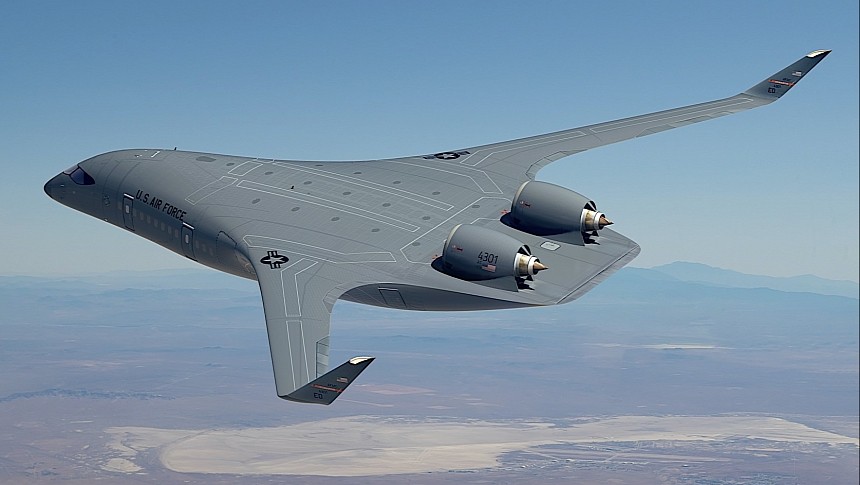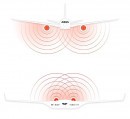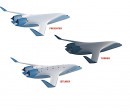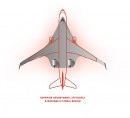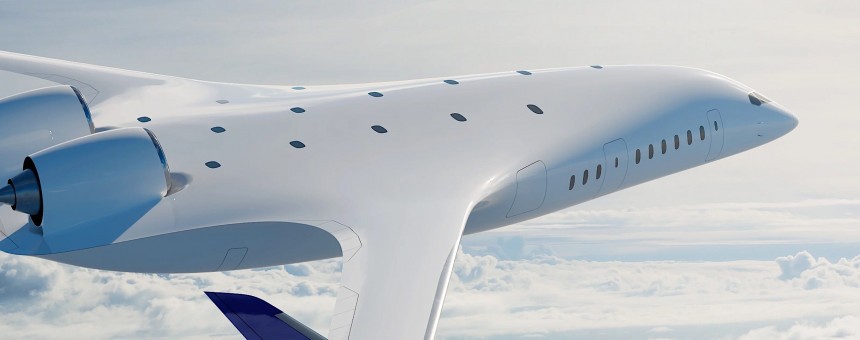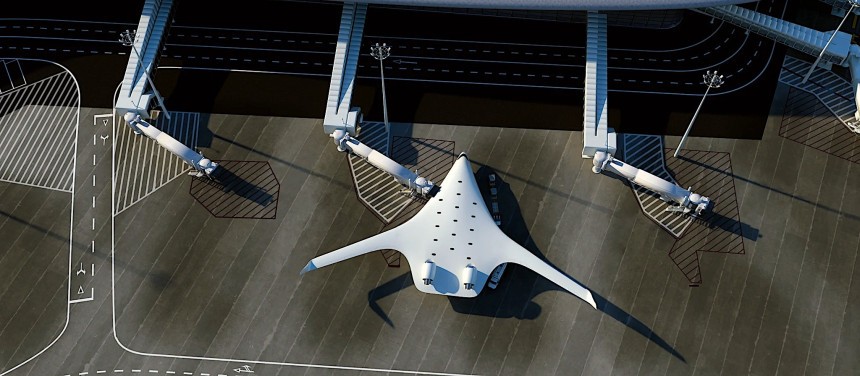More than a century of aviation has given us humans certain preconceptions when it comes to the machines that fly in our sky. Just take the shape of an aircraft into consideration. The simple mention of the idea immediately brings to mind one of two designs: either a cylinder with wings to either side (tube and wing, they call it), or a helicopter.
When talking about airplanes we're talking about a set of wings fixed to either side of the fuselage, both of them not only acting as the means to generate lift, but also, in most cases, as support for the plane's engines and storage for fuel.
For some reason, it's this design that stuck over the years. Naturally there are other ways of designing a plane, and the flying wing approach of the American military when it comes to the B-2 Spirit, for instance, is proof enough of that.
Although not exactly a flying wing, the blended wing body comes close in terms of capabilities and engineering, and it's the main focus of several private companies, but also of the American Air Force (USAF), which is now actively looking to get hold of airplanes shaped like this.
A blended wing body aircraft provides one with a very peculiar shape when looked at. Unlike a flying wing, which seems to have no body, and a lifting body, which seems to have no wings, this one clearly seems to have both. The problem is you can't really make out where its body ends and the wings begin. And it also comes with no tail surfaces.
The blended wing body idea came about in the 1920s as the Westland Dreadnought. It didn't stick, and for the decades that followed no one really pursued the idea. It was briefly revived in the 1990s by McDonnell Douglas and NASA with the BWB-17. Several privateers, including Airbus and Bombardier, tried their hand at it too, with not much success.
The main issue with this kind of design, the one that stopped it from evolving until now, is that it's more suited for cargo transport and military applications than passenger transport, and we all know passenger transport drives this industry. For instance, its shape could make it difficult for people to evacuate in case of an emergency.
In recent years though the concept of a blended wing body design has been revived, especially by startups that are trying to make a name for themselves in aviation. A crew called Natilus, for instance, is working on a series of cargo drones shaped like that.
On its end, the USAF is eyeing potential uses for this kind of aircraft as well. For combat and other uses in the hands of the military, such a design has clear advantages: less aerodynamic drag thanks to the shape, more range, increased loitering times and, of course, a sizeable cargo capacity.
As per the USAF, the main use for such a type of aircraft would be to transport cargo. Troops could be moved with them as well, especially considering how soldiers going on missions don't usually complain about space inside a plane, or the lack of sufficient ways out in case of an emergency.
And the military branch is serious about finding a suitable such aircraft. It plans to spend a total of $235 million over the next four years for the development of blended wing bodies, betting heavily that the advancements made recently in "structural design, materials technology, manufacturing, and other areas" could result in something tangible really soon.
And the USAF even started spending some of that money. This week we were told that the "next phase" in the design of a blended wing body prototype was handed to a company called JetZero.
That would be a California startup that aims, no more and no less, to achieve "the biggest leap in commercial aircraft architecture since the dawn of the jet age."
Capable of running fully on Sustainable Aviation Fuel (SAF), the still unnamed plane (the project is called so far Z5) will also have the "internal volume to accommodate zero-carbon emissions hydrogen. "
Not much is known about what exactly will power it, how capable it will be in terms of performance, and how many people or how much cargo it could carry, but we are promised 50 percent less fuel burned and the same amount more range that current aircraft with the same payload. And in today's world, such promises are huge.
These promises seem to have convinced the USAF. JetZero is planning three variants of the plane, jetliner, freighter, and trainer. It's unclear which one is the USAF's cup of tea, but we'll get to see such machine in operation, for testing purposes, as soon as 2027.
Throughout the next decade the startup is convinced its planes will be capable of full-time operations at the hands of both civilian and military customers.
For some reason, it's this design that stuck over the years. Naturally there are other ways of designing a plane, and the flying wing approach of the American military when it comes to the B-2 Spirit, for instance, is proof enough of that.
Although not exactly a flying wing, the blended wing body comes close in terms of capabilities and engineering, and it's the main focus of several private companies, but also of the American Air Force (USAF), which is now actively looking to get hold of airplanes shaped like this.
A blended wing body aircraft provides one with a very peculiar shape when looked at. Unlike a flying wing, which seems to have no body, and a lifting body, which seems to have no wings, this one clearly seems to have both. The problem is you can't really make out where its body ends and the wings begin. And it also comes with no tail surfaces.
The blended wing body idea came about in the 1920s as the Westland Dreadnought. It didn't stick, and for the decades that followed no one really pursued the idea. It was briefly revived in the 1990s by McDonnell Douglas and NASA with the BWB-17. Several privateers, including Airbus and Bombardier, tried their hand at it too, with not much success.
The main issue with this kind of design, the one that stopped it from evolving until now, is that it's more suited for cargo transport and military applications than passenger transport, and we all know passenger transport drives this industry. For instance, its shape could make it difficult for people to evacuate in case of an emergency.
On its end, the USAF is eyeing potential uses for this kind of aircraft as well. For combat and other uses in the hands of the military, such a design has clear advantages: less aerodynamic drag thanks to the shape, more range, increased loitering times and, of course, a sizeable cargo capacity.
As per the USAF, the main use for such a type of aircraft would be to transport cargo. Troops could be moved with them as well, especially considering how soldiers going on missions don't usually complain about space inside a plane, or the lack of sufficient ways out in case of an emergency.
And the military branch is serious about finding a suitable such aircraft. It plans to spend a total of $235 million over the next four years for the development of blended wing bodies, betting heavily that the advancements made recently in "structural design, materials technology, manufacturing, and other areas" could result in something tangible really soon.
And the USAF even started spending some of that money. This week we were told that the "next phase" in the design of a blended wing body prototype was handed to a company called JetZero.
Capable of running fully on Sustainable Aviation Fuel (SAF), the still unnamed plane (the project is called so far Z5) will also have the "internal volume to accommodate zero-carbon emissions hydrogen. "
Not much is known about what exactly will power it, how capable it will be in terms of performance, and how many people or how much cargo it could carry, but we are promised 50 percent less fuel burned and the same amount more range that current aircraft with the same payload. And in today's world, such promises are huge.
These promises seem to have convinced the USAF. JetZero is planning three variants of the plane, jetliner, freighter, and trainer. It's unclear which one is the USAF's cup of tea, but we'll get to see such machine in operation, for testing purposes, as soon as 2027.
Throughout the next decade the startup is convinced its planes will be capable of full-time operations at the hands of both civilian and military customers.
